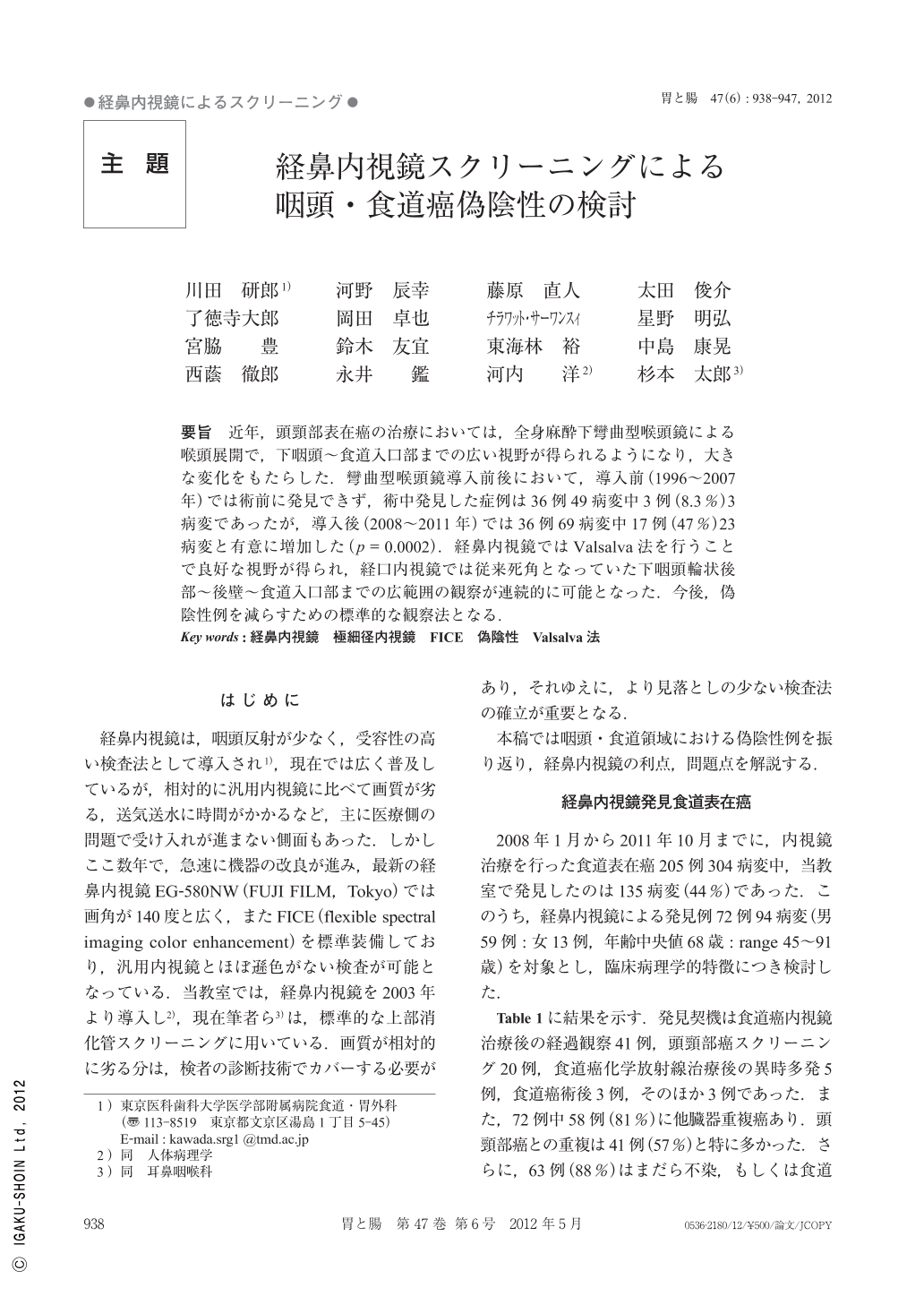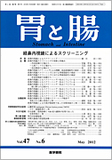Japanese
English
- 有料閲覧
- Abstract 文献概要
- 1ページ目 Look Inside
- 参考文献 Reference
要旨 近年,頭頸部表在癌の治療においては,全身麻酔下彎曲型喉頭鏡による喉頭展開で,下咽頭~食道入口部までの広い視野が得られるようになり,大きな変化をもたらした.彎曲型喉頭鏡導入前後において,導入前(1996~2007年)では術前に発見できず,術中発見した症例は36例49病変中3例(8.3%)3病変であったが,導入後(2008~2011年)では36例69病変中17例(47%)23病変と有意に増加した(p=0.0002).経鼻内視鏡ではValsalva法を行うことで良好な視野が得られ,経口内視鏡では従来死角となっていた下咽頭輪状後部~後壁~食道入口部までの広範囲の観察が連続的に可能となった.今後,偽陰性例を減らすための標準的な観察法となる.
In recent years, regarding the treatment of superficial head and neck cancer, obtaining a wide perspective from the hypopharynx to the esophageal orifice has become possible due to laryngeal expansion by a curved laryngoscope under general anesthesia, bringing about major changes. Regarding before and after the introduction of the curved laryngoscope, lesions were not discovered prior to surgery in 3cases(8.3%), 3lesions among 36cases, and 49lesions before the introduction(1996 to 2007)in terms of lesions discovered prior to surgery. However, following the introduction of the curved laryngoscope(2008 to 2011), it significantly increased to 17cases, 23lesions among 36cases, and 69 lesions(47%,p=0.0002). A good perspective was obtained with the nasal endoscope by carrying out the Valsalva maneuver and observation of a wide range from the postcricoid hypopharynx-posterior wall-esophageal orifice, which was conventionally a blind area upon peroral endoscopy, has become continuously possible. This will therefore be the standard observation method in the future in order to reduce false-negative cases.

Copyright © 2012, Igaku-Shoin Ltd. All rights reserved.


